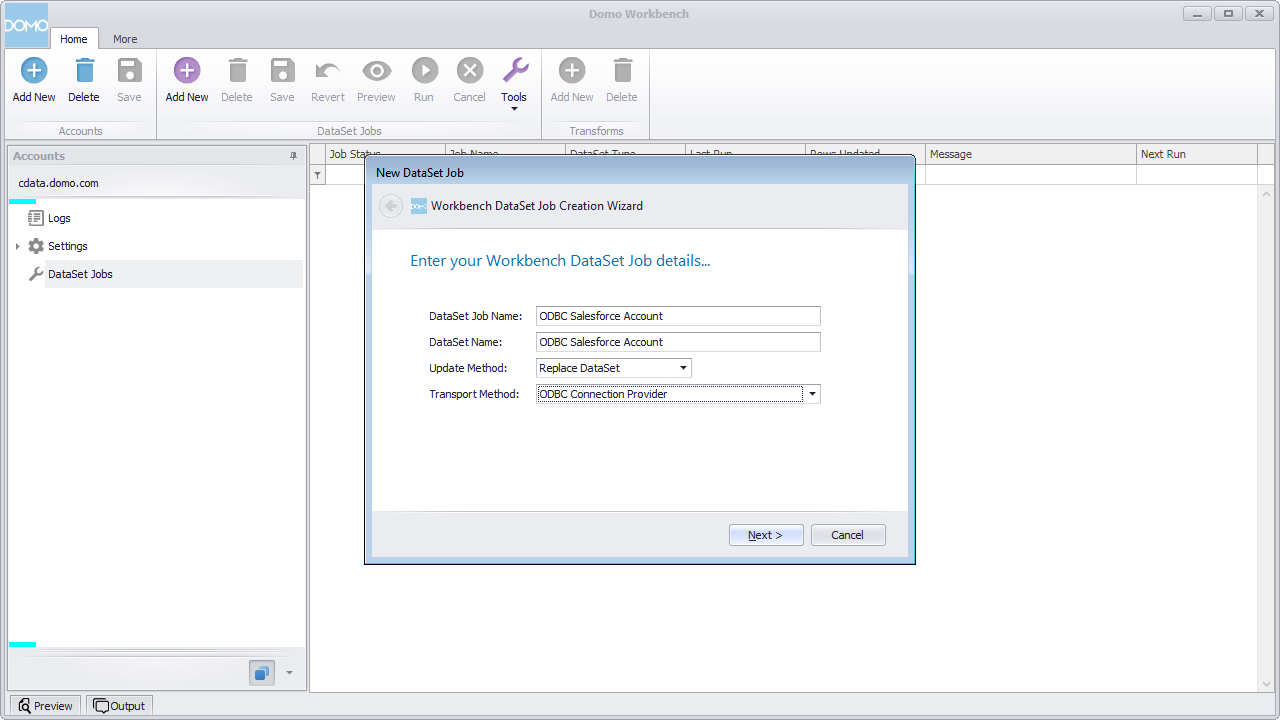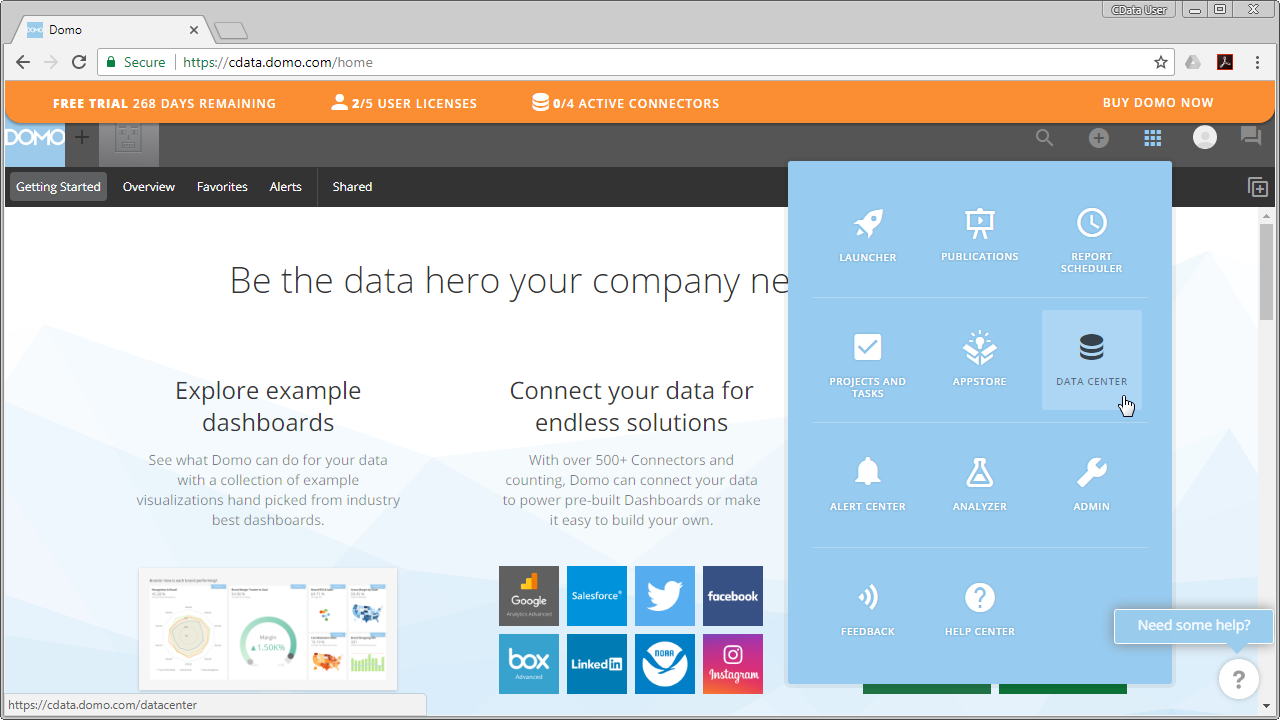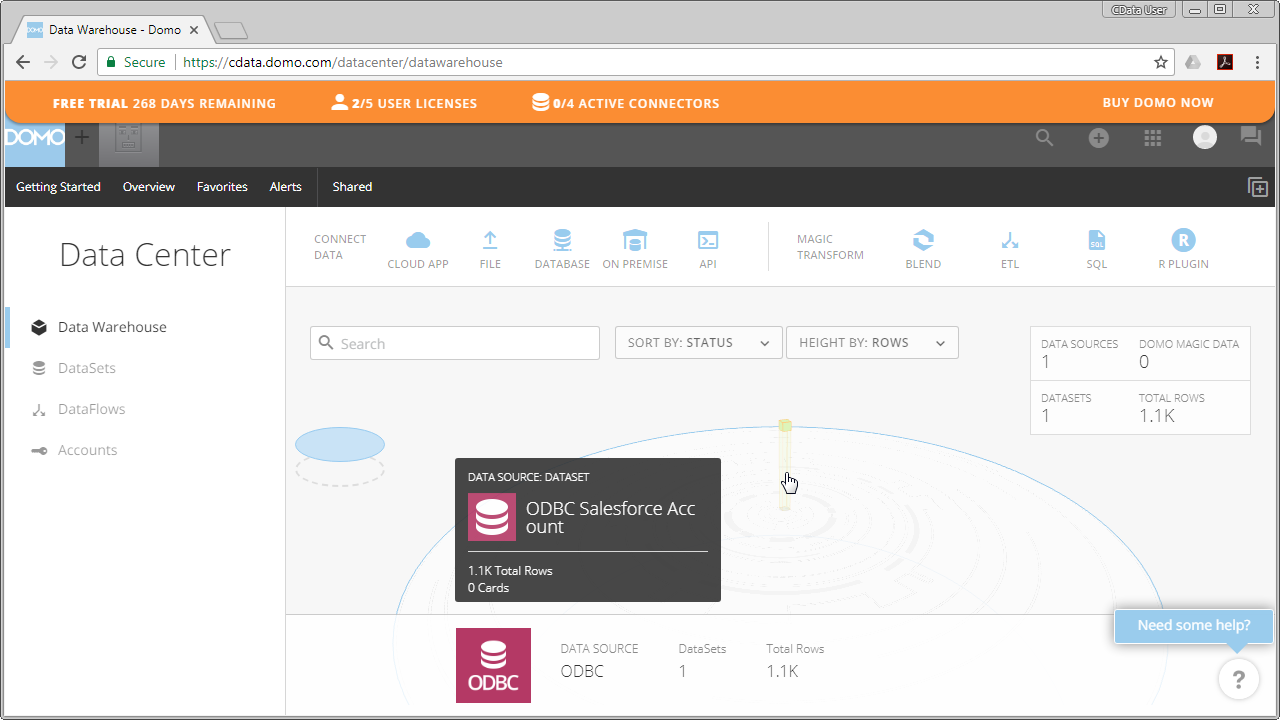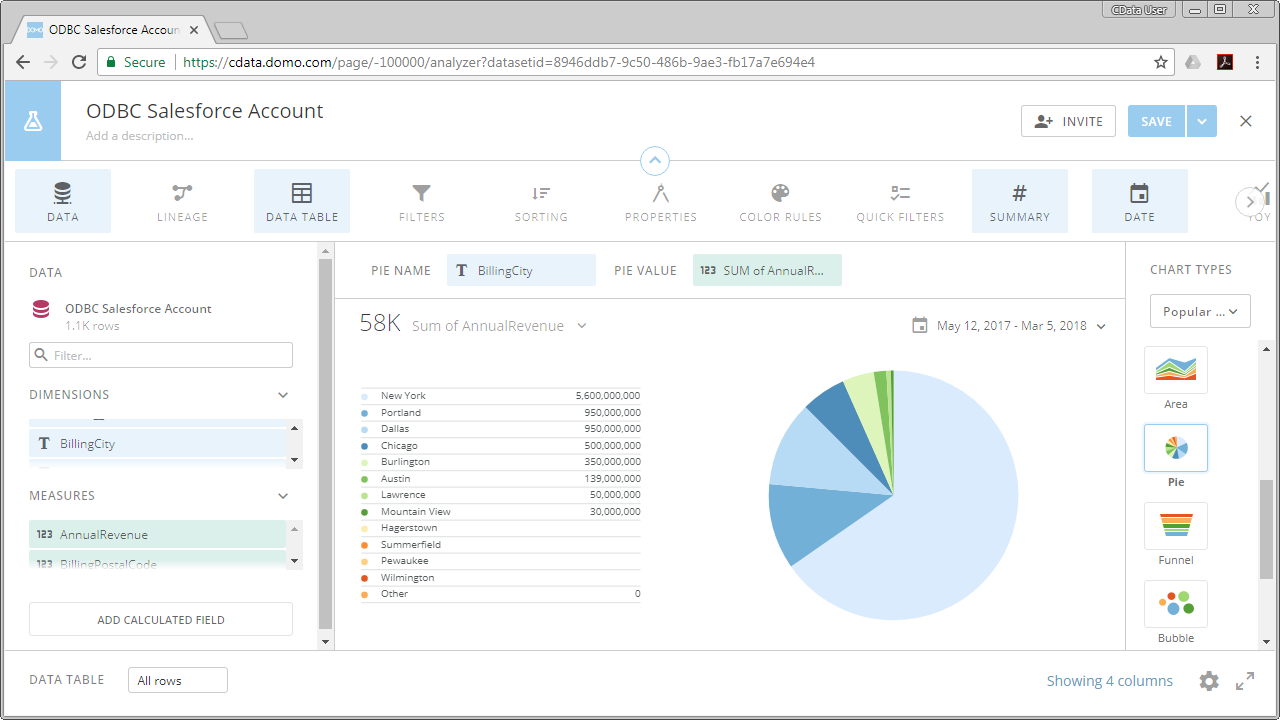Discover how a bimodal integration strategy can address the major data management challenges facing your organization today.
Get the Report →Create Datasets from REST in Domo Workbench and Build Visualizations of REST Data in Domo
Use the CData ODBC Driver for REST to create datasets from REST data in Domo Workbench and then build visualizations in the Domo service.
Domo helps you manage, analyze, and share data across your entire organization, enabling decision makers to identify and act on strategic opportunities. Domo Workbench provides a secure, client-side solution for uploading your on-premise data to Domo. The CData ODBC Driver for REST links Domo Workbench to operational REST data. You can build datasets from REST data using standard SQL queries in Workbench and then create real-time visualizations of REST data in the Domo service.
The CData ODBC Drivers offer unmatched performance for interacting with live REST data in Domo due to optimized data processing built into the driver. When you issue complex SQL queries from Domo to REST, the driver pushes supported SQL operations, like filters and aggregations, directly to REST and utilizes the embedded SQL Engine to process unsupported operations (often SQL functions and JOIN operations) client-side. With built-in dynamic metadata querying, you can visualize and analyze REST data using native Domo data types.
Connect to REST as an ODBC Data Source
If you have not already, first specify connection properties in an ODBC DSN (data source name). This is the last step of the driver installation. You can use the Microsoft ODBC Data Source Administrator to create and configure ODBC DSNs.
See the Getting Started chapter in the data provider documentation to authenticate to your data source: The data provider models REST APIs as bidirectional database tables and XML/JSON files as read-only views (local files, files stored on popular cloud services, and FTP servers). The major authentication schemes are supported, including HTTP Basic, Digest, NTLM, OAuth, and FTP. See the Getting Started chapter in the data provider documentation for authentication guides.
After setting the URI and providing any authentication values, set Format to "XML" or "JSON" and set DataModel to more closely match the data representation to the structure of your data.
The DataModel property is the controlling property over how your data is represented into tables and toggles the following basic configurations.
- Document (default): Model a top-level, document view of your REST data. The data provider returns nested elements as aggregates of data.
- FlattenedDocuments: Implicitly join nested documents and their parents into a single table.
- Relational: Return individual, related tables from hierarchical data. The tables contain a primary key and a foreign key that links to the parent document.
See the Modeling REST Data chapter for more information on configuring the relational representation. You will also find the sample data used in the following examples. The data includes entries for people, the cars they own, and various maintenance services performed on those cars.
When you configure the DSN, you may also want to set the Max Rows connection property. This will limit the number of rows returned, which is especially helpful for improving performance when designing reports and visualizations.
After creating a DSN, you will need to create a dataset for REST in Domo Workbench using the REST DSN and build a visualization in the Domo service based on the dataset.
Build a Dataset for REST Data
You can follow the steps below to build a dataset based on a table in REST in Domo Workbench using the CData ODBC Driver for REST.
- Open Domo Workbench and, if you have not already, add your Domo service server to Workbench. In the Accounts submenu, click Add New, type in the server address (i.e., domain.domo.com) and click through the wizard to authenticate.
![Connecting to the Domo Service.]()
- In the DataSet Jobs submenu, click Add New.
- Name the dataset job (i.e., ODBC REST people), select ODBC Connection Provider as the transport method, and click through the wizard.
![Configuring the DataSet Job.]()
- In the newly created DataSet Job, navigate to Source and click to configure the settings.
- Select System DSN for the Connection Type.
- Select the previously configured DSN (CData REST Sys) for the System DSN.
- Click to validate the configuration.
![Configuring the Source Settings.]()
- Below the settings, set the Query to a SQL query:
SELECT * FROM peopleNOTE: By connecting to REST data using an ODBC driver, you simply need to know SQL in order to get your data, circumventing the need to know REST-specific APIs or protocols. - Click preview.
![Querying REST Data.]()
- Check over the generated schema, add any transformations, then save and run the dataset job.
![Save and Run the Configured DataSet Job (Salesforce is shown).]()
With the dataset job run, the dataset will be accessible from the Domo service, allowing you to build visualizations, reports, and more based on REST data.
Create Data Visualizations
With the DataSet Job saved and run in Domo Workbench, we are ready to build visualizations of the REST data in the Domo service.
- Navigate to the Data Center.
![Accessing the Data Center (Salesforce is shown).]()
- In the data warehouse, select the ODBC data source and drill down to our new dataset.
![Selecting the REST Dataset (Salesforce is shown).]()
- With the dataset selected, choose to create a visualization.
- In the new card:
- Drag a Dimension to the X Value.
- Drag a Measure to the Y Value.
- Choose a Visualization.
![Visualizing REST Data in Domo (Salesforce is shown).]()
With the CData ODBC Driver for REST, you can build custom datasets based on REST data using only SQL in Domo Workbench and then build and share visualizations and reports through the Domo service.














